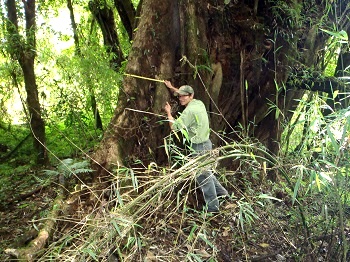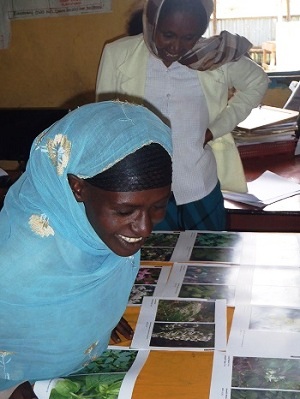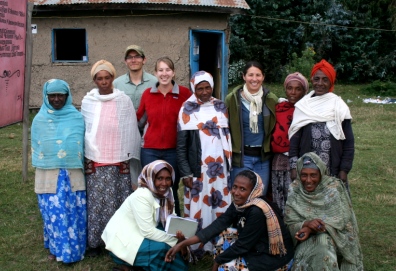August 26, 2013

My time was spent in this southern portion of the country, in the high montane forests constituting part of the greater Bale-Arsi Massif, which reach up to 4,377 meters (14,360 feet) elevation. The agro-pastoralists of this region are ethnic Oromo, who not only cultivate barley but also herd to a lesser extent a mixture of cattle and goats. Through the extensive work of Paul Evangelista and his team at the Natural Resource Ecology Laboratory (NREL), a generous fellowship through Colorado State University'sCenter for Collaborative Conservation, and the support of the 501(c)(3) non-profit The Murulle Foundation, I was able to engage my curiosity about local plant knowledge in the Bale Mountains and assess the importance of gender-based differences in local ethnobotanical knowledge. With plants playing a critical role in the daily lives of Ethiopians (some 80% of rural Ethiopians rely on plant-based medicine as their primary healthcare and around 90% of people in the southern highlands depend on small-scale rain-fed agriculture), I hoped to understand, and help preserve this important cultural knowledge; specifically knowledge of women, as their distinct way of knowing the landscape is often overlooked.
My experience in the Bale Mountains started with twenty-one days of continuous field work, 
Towards the end of our field work, we were provided the opportunity to interview two groups of local women that live adjacent to the National Park about local plant knowledge. Building on existing research of men's ethnobotanical knowledge in the Bale Mountains (Bussmann et al, 2011), semi-structured focus groups were conducted to catalogue women's floristic knowledge. These focus groups were led by three additional team members: Heather Young, an environmental educator with Larimer County Natural Resources, Christina Kuroiwa, a physician from the CSU Health Network (who has worked extensively with indigenous communities around the world), and our local Ethiopian friend, translator, driver, and tracker-extraordinaire, Aserat Worede. The ethnobotanical data collected were examined in an effort to understand gender-based differences in knowledge and use of plant-derived provisioning ecosystem services (i.e. the material and energetic outputs of an ecosystem, including tangible things that can be directly consumed, exchanged or used by people).
For nearly six hours at each location, we went through identifying plants from a pool of over 360 plant identification pictures spread out on table tops. The pictures were grouped according to their growth form (e.g. fern, grass, tree, shrub) and the women were encouraged to take as much time as they felt necessary to converse with each other, and walk around the room while examining the photos. All of the women collected pictures of plants they recognized, and once everyone had finished, we sat down as a group and went through each plant individually to discuss their local names and their derived uses. The women at one of the interview sites shared detailed stories, discussing environmental changes recently witnessed, including erratic precipitation patterns and the increasing frequency and intensity of disasters like drought and flooding, and shared detailed knowledge about and array of plants (Luizza et al, 2013), with a number of distinct uses from those of men. For example, the shrub Carissa edulis (or “Agempsa” in the local Oromiffa language) was noted by men to provide forage services, acting as food for livestock and 
Matt Luizza is PhD student in the Graduate Degree Program in Ecology (GDPE) and USDA NIFA Fellow through the Natural Resource Ecology Laboratory. He is co-advised by Paul Evangelista (NREL) and Michele Betsill (Department of Political Science).